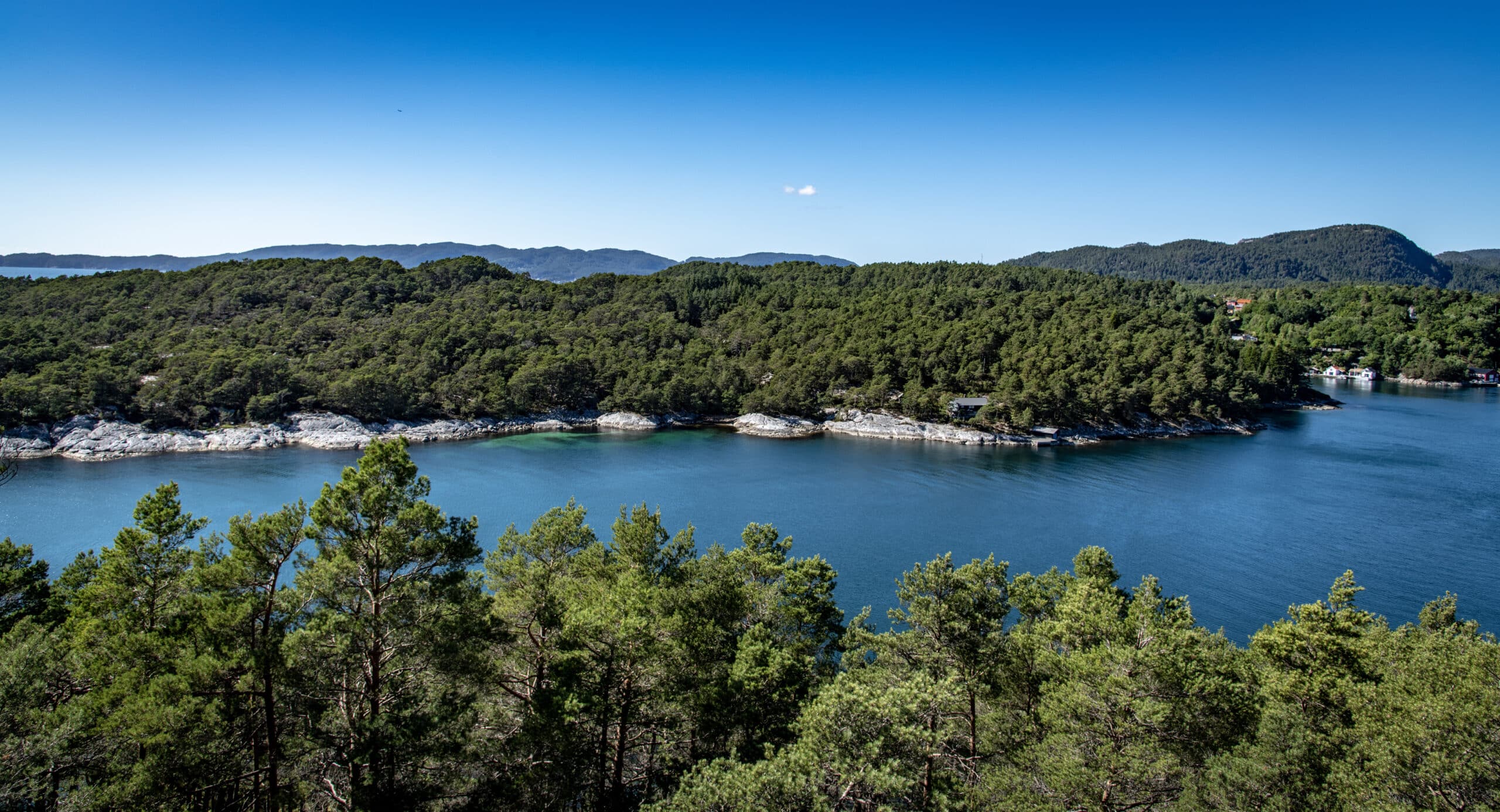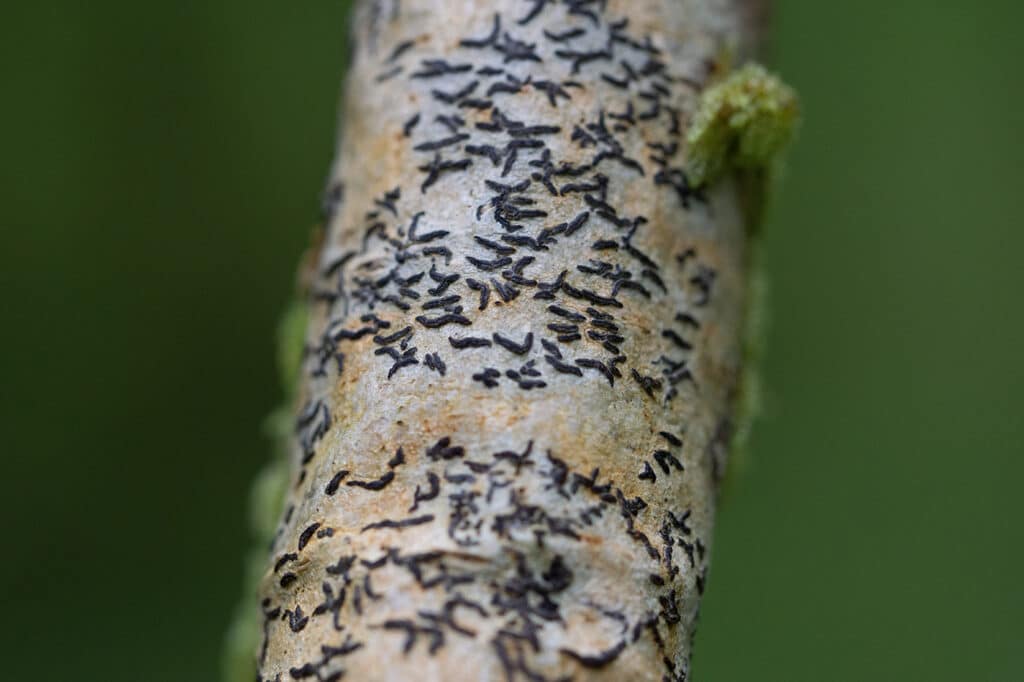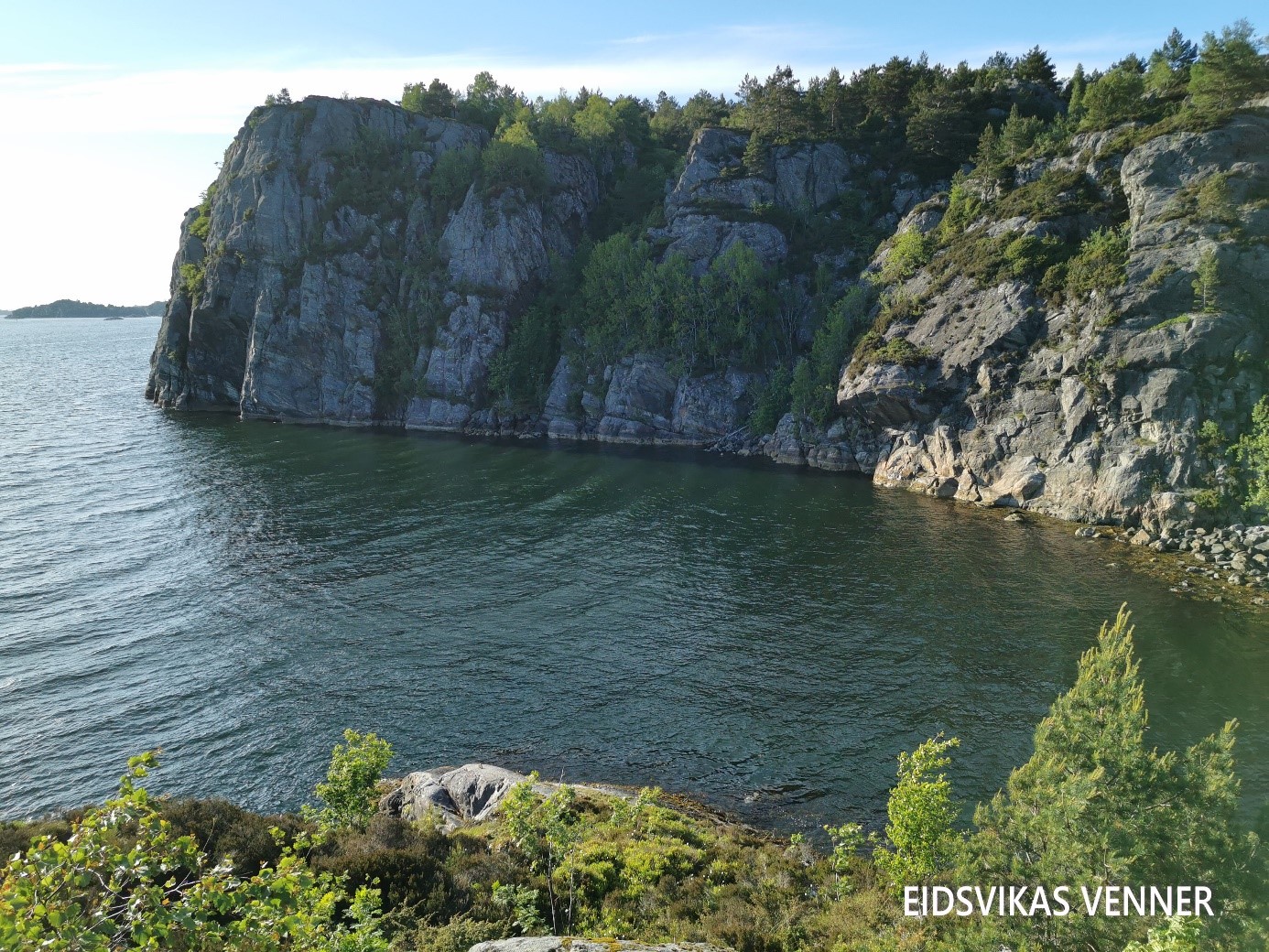Coastal conifer forests in Western Norway
Learn more about the rainforests of Western Norway and the species that live there.
 Jan C. Rivenæs
Jan C. RivenæsText: Nina Karoline Srebro and Agnes Thunem. Photo: Jan C. Rivenæs
Did you know that at least ten of the species we find in coastal conifer forests are considered Norwegian responsibility species? That means that more than 25% of its total European population resides in Norway.
Coastal conifer forests house several of these responsibility species and other red list species, which makes it very important. Even so, there isn’t enough awareness surrounding this type of nature, so development and use of the forest and surrounding areas can do more damage than we are aware of.
What is coastal conifer forest?
Coastal pine forest is a habitat of conifer dominated forest that grows along the coast of Norway. It is most common in Western Norway, but also in smaller areas of Southern Norway and north towards Troms. There are also several types of forests within coastal conifer forests, which we will look closer at here.
Western Norway’s rainforests
Did you know that there are rainforests in Norway? In these forests we find species of lichen and moss that don’t exist anywhere else in Northern Europe, which makes them highly rare and exposed. Three of the types of forest that exist within coastal conifer forests can be classified as temperate rainforests. This is because they exist in areas with temperate climate and constant high humidity.
These three types of forest are poor boreonemoral rainforest,rich boreonemoral rainforest, and boreal rainforest with conifers. Poor boreonemoral rainforest is the most prevalent of these types, and is defined based on the specific moss and lichen species that live in the high humidity here.
The types of forest overlap somewhat, but have unique ecological differences and prevalence, with different communities of moss and lichen that dominate in each of them.
 Jan C. Rivenæs
Jan C. RivenæsPoor boreonemoral rainforest
Poor boreonemoral rainforest is the most prevalent of the types of rainforest and is characterised based on the specific species of moisture loving moss and lichen that grow there. It contains species of script lichen that thrive near the coast and in areas with low pH. The most important tree species are hazel, rowan, white birch, and European red pine. On the three deciduous trees grows crustose lichen and some cladonia. Common indicator species are Arthonia ilicina, Pyrenula occidentalis, and Bunodophoron melanocarpum.
Rich boreonemoral rainforest
Rich boreonemoral rainforest is characterised by Lobaria pulmonaria, with large moisture loving foliose lichens on bark and lime rich stone. The forest has a considerable element of temperate deciduous trees, with many different species. Species such as ash, aspen, elm, linden, hazel, willow, and rowan are common. In pine and birch dominated landscapes they are less common. Very often we find the rich boreonemoral rainforest in steep terrains. Indicator species can include Pannaria conoplea and Pannaria rubiginosa.
Boreal rainforest with pine
Boreal rainforests with pine contain a characteristic group of large liverworts that requires constant high moisture both in the ground and the air, while at the same time they abhor standing water. Indicator species are Arthothelium norvegicum, Anastrophyllum joergensenii, and Scapania ornithopodioides.
The species that live in the temperate rainforests are reliant upon constant high humidity. It is the topography that maintains this humidity, all year around. The forests are often spread out surrounding waterways, like waterfalls and streams. We also find them in north facing hills, which are less exposed to drying out in the sun than the rest of the terrain.
At first glance a temperate rainforest won’t look much different than other coniferous forests. The reason is that the humidity in rainforests first of all provides growth conditions for special species of lichen and moss. Therefore, to separate coastal conifer forests from other conifer forests we must survey the different species up close.
Other types of coastal conifer forest
Old coastal conifer forest
Old coastal conifer forests have a unique composition of characteristic lichen and moss species that grow on dead wood. Several red listed species of fungi are also closely tied to the damp old coastal conifer forests. The definition of old coastal conifer forests has been varied, and it hasn’t had a specific place in the system of types of nature. Examples of species found here include Nevesia sampaiana and Scapania ornithopodioides.
Herbaceous coastal conifer forest
Herbaceous coastal conifer forests grow in medium to very drought exposed ground. Pine is the dominant tree species. The forest often lets in a lot of light and has a large biodiversity of plants and insects. Usually occurs in lower altitudes, often near the coast and settlements. This type of forest is therefore threatened by expansions in the process of building housing, commercial areas, and infrastructure. Additionally it is easily accessible for forestry. Characteristic species are for example blueberries, hard ferns, tormentil, and arctic starflower.
Olivine conifer forest
Olivine conifer forests get their name from the high levels of olivine – a magnesium iron silicate mineral – in the ground. There are also minerals containing heavy metals, such as serpentine. The forest has a unique diversity of ground vegetation and is usually dominated by pine. Extraction of mass and mining operations are an especially big threat. Logging and tree species change to spruce is also damaging. Typical species can be green spleenworth (a lime loving fern) and fungi like Russula cessans and Suillus flavidus.
What is threatening the coastal conifer forests today?
Some of the biggest threats facing these types of nature are insufficient administration, algae growth on trees, logging, new constructions, deer feeding on bark, and new species.
Failures of administration
According to Miljøfaglig Utredning AS’s report, there are approximately 37 square kilometres of coastal conifer forest in Norway, not including unregistered areas. If we include these unknowns, the total area of coastal conifer forests in Norway could be up to 61 square kilometres. It is estimated that about 0.8 square kilometres of these coincidentally lay within already established protected areas. A lack of mapping and protection makes this nature type susceptible to pressure from development projects and forestry. We can risk losing the coastal conifer forests in Western Norway if we don’t ensure they are protected.
Coastal conifer forests are threatened by human activity
A large section of coastal conifer forests lay intertwined with planted conifers in forestry areas. Additionally, planted fields often border coastal conifer forests and impact the rainforest in several ways. On one hand it stabilises the local climate by sheltering the nearby area from rain and wind. Removing the planted spruce will therefore lead to increased effects of wind and larger variations in humidity. On the other hand, the spread of spruce from older planted fields can pose a threat since it can shade out important deciduous species from the area. Tree species change from pine to spruce has also claimed much of the potential land for the temperate rainforests. Therefore it is important to look at the whole image when decommissioning planted fields or engaging in logging.
Area expansions like bigger road- or residential projects are also important threats. Air pollution from development also increases the growth of algae on tree trunks, outcompeting existing lichens. This is the biggest short term threat.
Climate change will also impact the environment. Possible drought periods will pose a big threat to species that rely on high humidity, and increased extreme weather can be destructive. But on the positive side, climate change can lead to increased precipitation and higher temperatures, something that allows the rainforests to expand its range. But this can also cause increased algae growth on the trunks.
Invasive species and deer feeding on trees
The spread and establishment of invasive conifer species can displace important species and change the humidity and light conditions in the forests. Sitka spruce, firs, and western hemlock all have the potential to establish populations in poor boreonemoral rainforests. These species have a good dispersal ability and grow well in shade and in established forests. Decorative trees and hedge plants also disperse easily and can invade forests.
Feeding by deer is also a big potential threat. This includes damages inflicted by chewing on bark, but especially by grazing of young plants, which leads to a reduction in the rejuvenation of important species of trees.
The coastal conifer forest must become more visible!
Norways coastal conifer forests are treasures of biodiversity, and they are our responsibility to maintain.Administration of coastal conifer forests should be adapted to the dynamics of the unique type of nature, and have strict regulations for logging. The threatened lichen and moss species are reliant on consistent access to the correct wood in the correct locations, and we don’t know for certain how much variation these species can handle. Known locations should be treated by the precautionary principle, and we should avoid interventions in these forests as far as possible. By putting the spotlight on coastal conifer forests and regulating development and use of forests and surrounding areas, we’ll be better equipped to protect them.
Text by students Nina Karoline Srebro and Agnes Thunem. They’ve been interning with us at the office this semester.
- Artsdatabanken (2018) Kalk- og Lågurtfuruskog, tilgjengelig fra: https://artsdatabanken.no/RLN2018/392
- Artsdatabanken (2018) Olivinskog, tilgjengelig fra: https://artsdatabanken.no/rln/2018/366/olivinskog?mode=headless
- Blom, H. H. et al., 2015. Fattig Boreonemoral regnskog – et hotspothabitat. Sluttrapport under ARKO-prosjektets periode III., Bergen: NINA.
- Holien H., Prestø T.(1996) Lav og moser i kystgranskog. Populasjonsbiologi, overvåking og effekte skoglige aktiviteter i Årsrapport 1995 for prosjektet «Forvaltningsstrategier for kystgranskog» Vitenskapsmuseet Botanisk Notat. NTNU.
- Holtan, D. 2008. Olivinskogene i Norge – en oppsummering av status og verdi. Møre og Romsdal fylke, areal- og miljøvernavdelinga Rapport 2008: 06: 53 s.
- Miljolare, u.d. Kystfuruskog, s.l.: Miljolare.
- Miljøfaglig Utredning AS, u.d. Vår natur – Natur vi kjenner ekstra godt, s.l.: s.n.
- Steinsvåg, K. M. F., Blindheim, T., Gaardner, G., Høitomt, T., Ihlen, P. G. og Langhelle, M. L. (2018) Naturfaglige registreringer i kystfuruskog. Sammenstilling av kartleggingsresultater 2012-2017. Miljøfaglig Utredning rapport 2018-10.
- Ødegaard, F., Linnell, J. & Blom, H. H., 2015. Visste du at vi har regnskog på Vestlandet?, s.l.: blogg.forskning.
News in English
Thanks to our volunteers, we have a number of articles in English.


